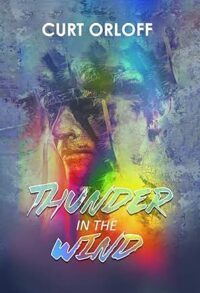Title: Thunder in the Wind
Author: Curt Orloff
Publisher: Blackstone Print and Media
ISBN: 978-1960753335
Pages: 600
Genre: Historical Fiction
Reviewed by: Christina Avina
Hollywood Book Reviews
There are many themes and stories which define the history and building of the United States of America; the stories of families escaping religious persecution; militia becoming a united army to take down one of the strongest nations in the world; brother fighting brother as a nation stood divided. Yet the memorable and celebratory events that defined a nation cannot be felt without also acknowledging the mistakes and horrors which occurred along the way. The stealing of the land from the Native American people and the forced erasure of their culture and way of life are embedded into the history of America forever, and only by acknowledging that history can the country move forward in a better direction.
Telling these stories and remembering those who endured those events is the backbone of the story found in author Curt Orloff’s Thunder in the Wind. The story follows the Assiniboine Indians in the late 19th century as the tribe is forced to adopt the faith and practices of Christianity. One young man fights to preserve his people’s culture, while his mother adopts to the changes in an effort to protect her family. As mother and son clash, the son’s rebellion begins using tactics found in today’s culture of using fear to strike terror into the hearts of his opponents until they submit, and the conflict between mother and son soon highlights the divide found within our own culture today.
Immediately the author established the stark divide that existed between the Assiniboine and the Christians, both in culture and viewpoints. The atmosphere which the author created not only brought this conflict to life so realistically, but allowed the reader to see how each side’s particular viewpoints and beliefs influenced how they interacted with one another. The detail the author put into the history and era of the story’s narrative allowed the reader to feel transported into the setting, influencing how the reader related to these characters and allowing them to feel the heightened emotions of the protagonists of this tale.
Engaging with some powerful themes of cultural assimilation, culture destruction, and the theme of identity as a whole, the author brought powerful characters to life that perfectly illustrated the conflict. Miskaw and his mother’s relationship became central to the entire narrative, and the evolving journey they both went on as they fought for their own viewpoint and belief made their difficult relationship so engaging a reader. The lessons that Miskaw learned, both in the differences and similarities between his people and white men, reflected how often in today’s own politically charged climate, people forget to see the similarities between one another and instead focus on the great divides instead, a lesson this book brings home passionately.

